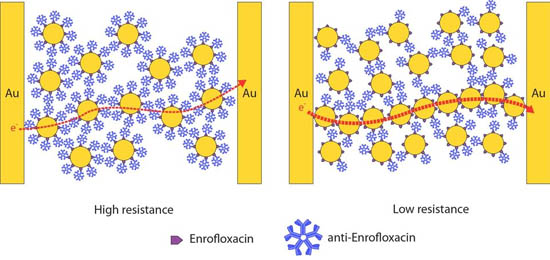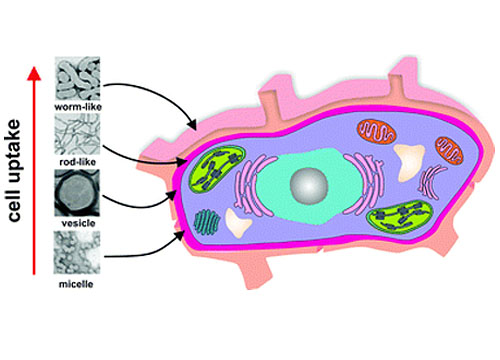
AsianScientist (Jun. 4, 2012) – Researchers in Australia have developed a new class of biosensor that can detect exceptionally small traces of contaminants in liquids in just 40 minutes.
Known as a biochemiresistor, it meets a long-standing challenge to create a sensor that is not only super-sensitive to the presence of chemical compounds but responds quickly. Its potential uses include the detection of drugs, toxins, and pesticides for biomedical or environmental analysis.
In a paper published in the journal Angewandte Chemie, the researchers describe how they successfully tested the new sensor by detecting tiny traces in milk of the veterinary antibiotic enrofloxacin.
“Enrofloxacin is an antibiotic used in the agricultural industry that can be transferred to the food chain. Our biochemiresistor was able to detect enrofloxacin in neat milk in 40 minutes, at level as low as one nanogram in a liter of milk,” said co-author Prof. Justin Gooding, of the UNSW School of Chemistry and the Australian Center for Nanomedicine.
A biosensor is a portable analytical device that uses biological molecules to detect selectively just one compound within a mix of many others. Small biosensors are already in daily use testing the safety of drinking water, for checking diabetic blood-sugar levels, and for pregnancy tests.

The biochemiresistor uses gold-coated magnetic nanoparticles modified with antibodies that are selective for the chemical constituent – or analyte – of interest. The nanoparticles are dispersed into the sample for analysis and if the analyte is present some of the antibodies detach from the nanoparticles.
Using a magnet, the nanoparticles are then assembled into a film between two electrodes and the electrical resistance is measured. The more analyte is present, the more antibodies leave the nanoparticles and the lower the resistance in the nanoparticle film.
“The biochemiresistor is also more sensitive than the usual biosensor because, as the nanoparticles are dispersed throughout the sample, the entire sample is analyzed, not just a small portion of the solution,” explained Gooding.
The article can be found at: Lai LMH et al. (2012) The Biochemiresistor: An Ultrasensitive Biosensor for Small Organic Molecules.
——
Source: UNSW.
Disclaimer: This article does not necessarily reflect the views of AsianScientist or its staff.












